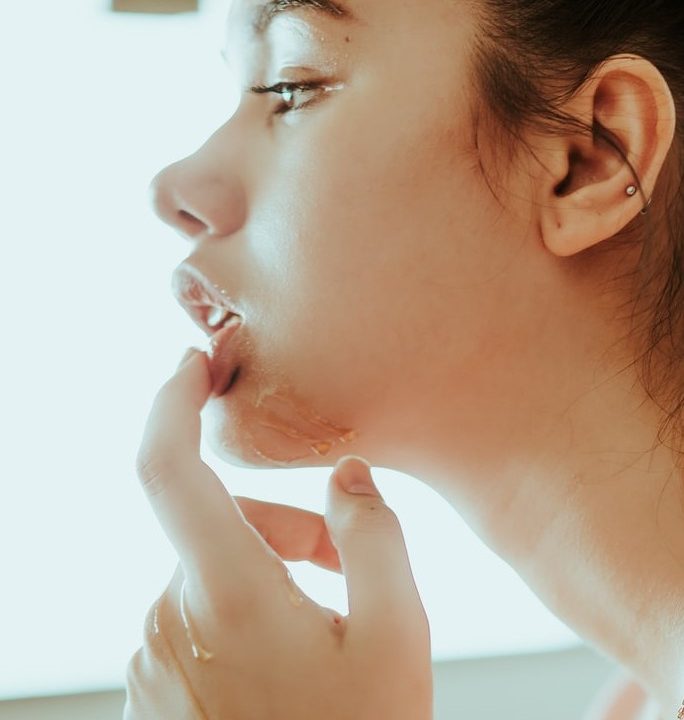Home Health May 6, 2020
Everyone picks their skin. But what do you do when it's more than that?


While everyone picks at their skin from time to time, you may have a skin picking disorder if you repetitively pick at your skin to the point of causing damage. According to Psychology Today, dermatillomania is defined as:
“An excoriation and skin-picking disorder that results in repetitive and compulsive skin picking.”
As dermatillomania is an impulse control disorder and one of many body-focused repetitive behaviors, it is currently classified in the DSM-5 under Obsessive-Compulsive Disorder.
As someone who has dermatillomania, this skin picking disorder is more than just picking a few pimples every day. Dermatillomania often makes people spend hours a day picking their skin which often results in visible skin damage and feelings of shame, anxiety, embarrassment, and depression. As a result, many people with this disorder experience awkward social interactions, spend hours covering up blemishes with make-up and clothing and have uncomfortable relationships with family and friends.
If you feel like a skin picking disorder is something you are struggling with, here are seven tips from the TLC Foundation to help you cope and manage your skin picking disorder.
When you really want to pick your skin, sometimes having some sort of sensory simulation like toys can help distract you until the urge to pick your skin goes away.
Some ideas for touch-toys and fiddle toys include play-doh, fidget spinners, fidget cubes, stress balls, and slime, all of which you should be able to buy online or at your nearest dollar store. If you feel like toys are not working for you, you can always try wearing gloves as they provide a barrier to prevent you from picking.

Although your goal is to stop picking your skin altogether, this is a helpful stepping stone strategy. Differentiate your acne into three categories: “A” spots, “B” spots and “C” spots.
“A” spots are whiteheads that most people would pick and that are okay to pick. “B” spots are infected or sore that you should avoid picking. “C” spots are healthy skin which you should definitely avoid picking.
By differentiating between these types of skin, if you are going to pick, you are not damaging or scarring your skin.


Sometimes when you have dermatillomania, it can be discouraging when it feels like things are not getting any better. That is why it can be so valuable to track your progress and record your successes in a journal.
Every day, write one positive thing that you did that was related to dermatillomania. As a result, even when you have had bad days, you can remind yourself of the successes and good days.


Ugh. Exercise. I know, I hear you. While exercise is not as fun as chilling on the couch, exercise is a great way to help you release your intense emotions. And when you release your intense emotions, it can often actually alleviate your urges to pick at your skin.
In a blog post on Smart Recovery’s website titled, “Benefits of Exercise in Addiction Recovery” an anonymous former alcoholic and current marathon runner explains that exercising to treat addictive behaviors does not need to be too vigorous:
“In this context low impact does not mean less effective. Extensive research shows that even walking for 30 minutes a day several days a week can reap benefits.”
So grab your running shoes and hit the gym or take a lap around your neighborhood.


With dermatillomania, your environments matter. That is why it is so important to not have anything in your environment that enables your disorder, including mirrors. If that is too hard, you can turn off the lights when you go to the bathroom or use uplifting sticky notes.


Meditation is important because it can help you stay present and become more aware of your skin picking habits. For starting out, I would recommend downloading an app like Calm or Headspace.


Of course, all these strategies can be helpful, but often professional treatment plans are needed as well. According to Psychology Today, treatment for dermatillomania can include Cognitive-Behavioral Therapy (CBT), Acceptance and Commitment Therapy (ACT), and Habit-Reversal Training (HRT). According to this same article, only one in five people with dermatillomania actually seek treatment.
If these kinds of therapies do not work for you, there is always the option of medication like antidepressants.


While living with a skin picking disorder often has setbacks and challenges, do not give up. No matter what you are going through, just remember that you are not alone. There are supports and resources out there that can help you.